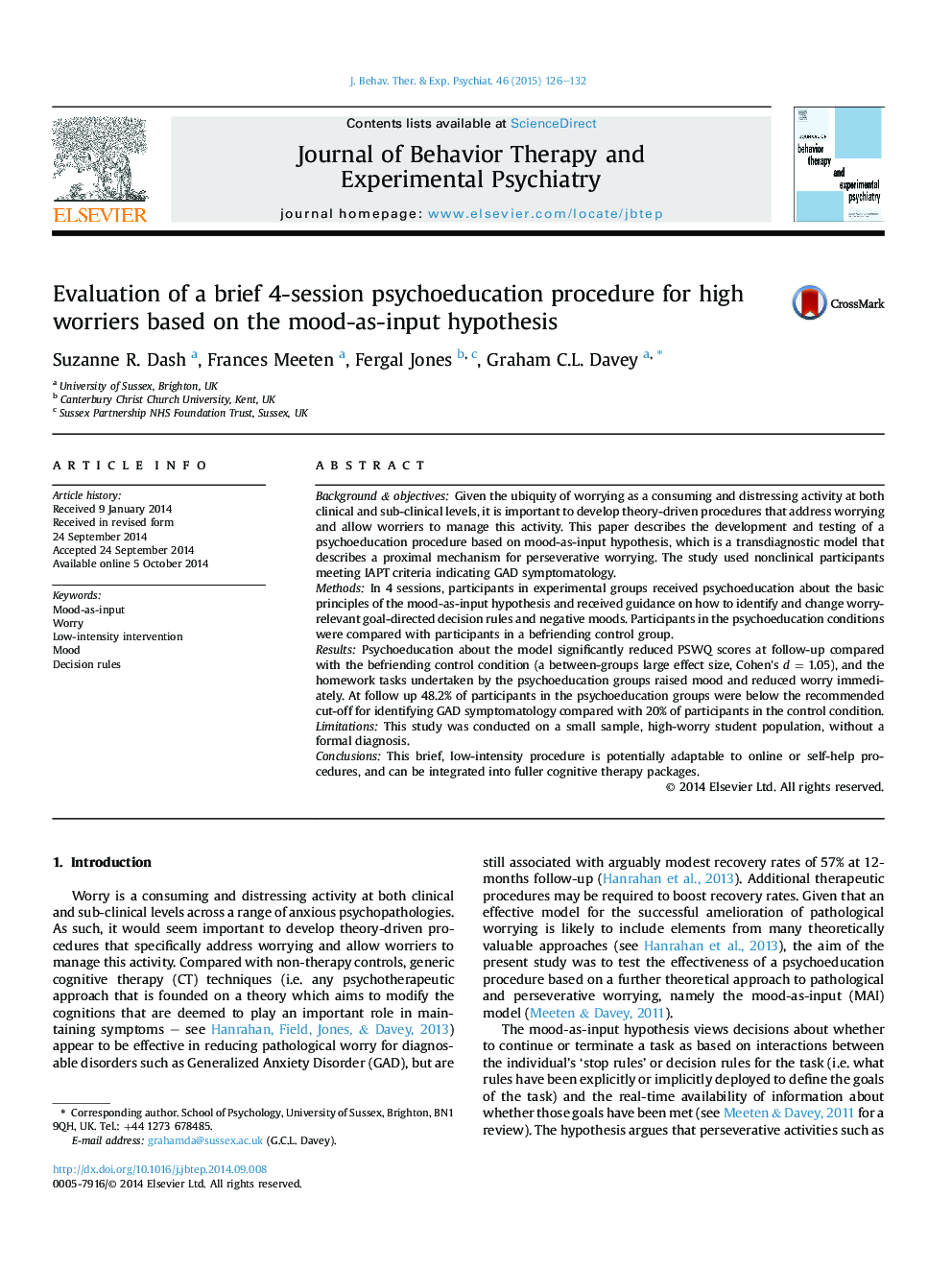| کد مقاله | کد نشریه | سال انتشار | مقاله انگلیسی | نسخه تمام متن |
|---|---|---|---|---|
| 910353 | 1473069 | 2015 | 7 صفحه PDF | دانلود رایگان |
• Psychoeducation about mood-as-input reduced PSWQ scores at follow-up compared with a control.
• At follow up 48.2% of those in the psychoeducation groups below the IAPT criteria for GAD symptoms.
• Procedure can be used in online procedures and integrated into fuller cognitive therapy packages.
Background & objectivesGiven the ubiquity of worrying as a consuming and distressing activity at both clinical and sub-clinical levels, it is important to develop theory-driven procedures that address worrying and allow worriers to manage this activity. This paper describes the development and testing of a psychoeducation procedure based on mood-as-input hypothesis, which is a transdiagnostic model that describes a proximal mechanism for perseverative worrying. The study used nonclinical participants meeting IAPT criteria indicating GAD symptomatology.MethodsIn 4 sessions, participants in experimental groups received psychoeducation about the basic principles of the mood-as-input hypothesis and received guidance on how to identify and change worry-relevant goal-directed decision rules and negative moods. Participants in the psychoeducation conditions were compared with participants in a befriending control group.ResultsPsychoeducation about the model significantly reduced PSWQ scores at follow-up compared with the befriending control condition (a between-groups large effect size, Cohen's d = 1.05), and the homework tasks undertaken by the psychoeducation groups raised mood and reduced worry immediately. At follow up 48.2% of participants in the psychoeducation groups were below the recommended cut-off for identifying GAD symptomatology compared with 20% of participants in the control condition.LimitationsThis study was conducted on a small sample, high-worry student population, without a formal diagnosis.ConclusionsThis brief, low-intensity procedure is potentially adaptable to online or self-help procedures, and can be integrated into fuller cognitive therapy packages.
Journal: Journal of Behavior Therapy and Experimental Psychiatry - Volume 46, March 2015, Pages 126–132
